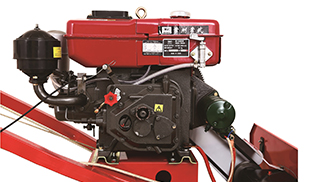ທ.ວ. . 26, 2024 07:54 Back to list
Guidelines for Accurately Measuring the Size of Brake Drums
How to Measure Brake Drum Size
Measuring the size of a brake drum is an essential task for vehicle maintenance and replacement. A properly sized brake drum ensures optimal performance and safety by providing adequate stopping power. Failing to use the correct size can lead to decreased braking efficiency, uneven wear, and potential damage to the braking system. This article will guide you through the process of measuring brake drum size accurately and efficiently.
Understanding Brake Drums
Before diving into the measurement process, it's important to understand what brake drums are and their function. Brake drums are metal components that work with brake shoes to create friction, allowing vehicles to slow down or stop. They come in various sizes and specifications based on the make and model of the vehicle. When replacing brake drums, ensuring that the size matches the original specifications is crucial for maintaining performance.
Tools Needed
To measure a brake drum effectively, you'll need a few basic tools
1. Caliper or Ruler A digital caliper is preferred for precision; however, a standard ruler can also work. 2. Measuring Tape Useful for measuring circumferences. 3. Micrometer For precise thickness measurements, if necessary. 4. Safety Equipment Gloves and safety glasses to protect yourself during the measurement process.
Step-by-Step Measurement Process
1. Remove the Wheel Begin by safely lifting the vehicle using a jack and securing it with jack stands. Remove the wheel to access the brake drum.
how to measure brake drum size

2. Clean the Brake Drum Use a brake cleaner to remove dust and debris from the drum's surface. This allows for a clearer view and helps ensure accurate measurements.
3. Measure the Diameter - Internal Diameter Use a caliper to measure the internal diameter of the brake drum. Place the jaws of the caliper inside the drum and expand them until they make contact with the inner surface. Record the measurement accurately. - External Diameter If needed, measure the external diameter using the same technique. This measurement might be important for specific applications or when replacing the drum.
4. Check for Thickness Using a micrometer, measure the thickness of the brake drum at several points around the circumference. The thickness is crucial for ensuring that the drum can handle the required stresses without warping or cracking during operation.
5. Measure the Offset and Depth The offset and depth of the drum may also need to be evaluated, depending on the vehicle specifications. Use a caliper to measure the depth from the top edge of the drum to the bottom where the brake shoes contact.
6. Document Your Measurements It’s important to keep a record of all your measurements for reference when purchasing new brake drums.
Additional Tips
- Consult Vehicle Specifications Always refer to the vehicle's service manual to verify the OEM (Original Equipment Manufacturer) specifications for brake drum size and other requirements. - Consider the Clearance When replacing brake drums, ensure that they provide adequate clearance for the brake shoes and wheel assembly.
- Inspect Condition While measuring, inspect the condition of the drum for any signs of wear, warping, or damage. If the drum is significantly worn or damaged, it may need to be resurfaced or replaced, regardless of the size.
Measuring brake drum size is a straightforward task, yet it is crucial for ensuring the safety and efficiency of your vehicle. By following these steps and using the right tools, you can accurately measure and replace brake drums, maintaining the integrity of your vehicle's braking system. Remember, when in doubt, consulting a professional mechanic is always a wise choice. Safety should always come first on the road!
-
Iveco Brake Drum | Premium OE Quality for Daily & Eurocargo
NewsAug.22,2025
-
Your Brake Drum Man: Quality & Performance Parts
NewsAug.21,2025
-
Explore Japan: Ultimate Travel Guide & Authentic Experiences
NewsAug.19,2025
-
Your Brake Drum Man: Premium & Reliable Brake Drums for Sale
NewsAug.18,2025
-
ROR Web Development: Build Fast, Scalable, Secure Apps
NewsAug.17,2025
-
Scania Brake Drums: OEM Quality for Optimal Safety & Durability
NewsAug.16,2025
